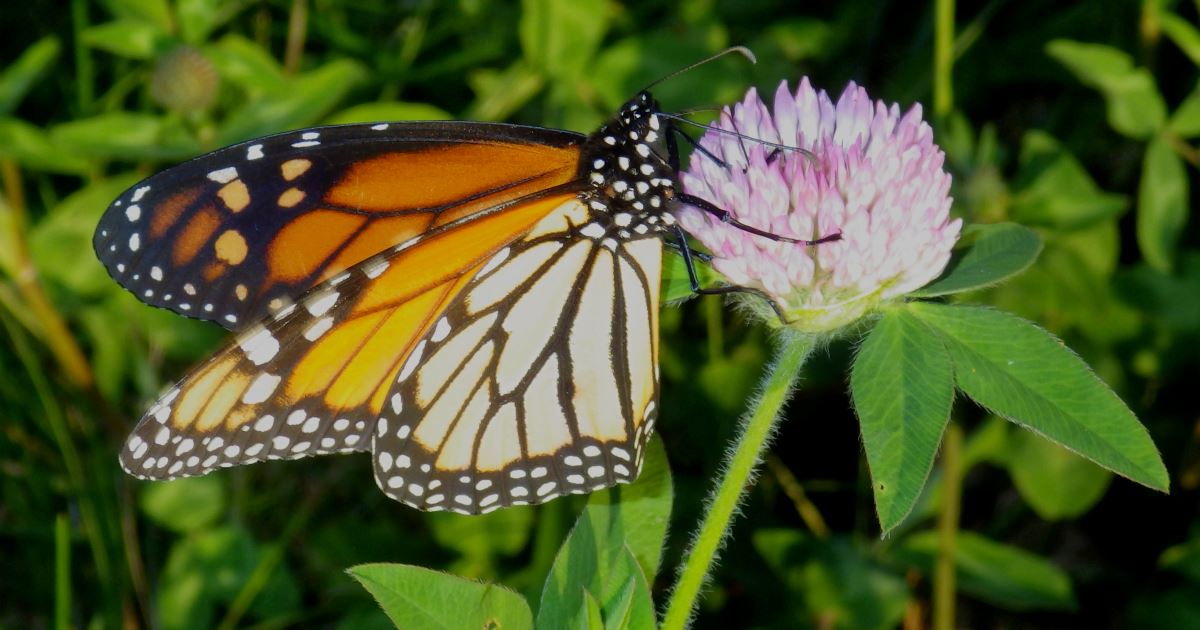Monarch butterflies are famous for their migrations from as far north as Canada to all the way down to Mexico.

Monarch butterfly (Danaus plexippus), in a milkweed patch in Toronto.
This one appears to be the male of the species.
None of the butterflies make the entire round trip, it is a different generation that arrives to the north from the one that has started the trip to the south.

A little nectar for the road, a monarch butterfly feeding on a red clover in September.
Photographed at the Finch Hydro Corridor.
Monarch butterflies are dependent on milkweed because that is all that the monarch butterfly larvae eat. If you want to attract monarch butterflies plant some milkweed in your garden and let it grow.
Monarch butterflies accumulate poisonous cardiac glycosides from the milkweed that they eat and as a result both caterpillars and adult monarch butterflies have a disgusting taste and are poisonous. Their bright coloration is a warning to predators that the monarch butterflies are not good to eat.
Because predators would not touch the monarch butterfly it is beneficial for other butterflies to be mistaken for a monarch. The viceroy butterfly protects itself by mimicking the coloration of the monarch butterfly, although there are alternative theories that the two butterflies mimic each other.

Further Readings:
Monarch butterfly migration on Wikipedia.
Monarch Butterfly on WWF-Canada.
Monarch Butterfly on Hinterland Who’s Who.
Monarch Butterflies Could Gain Endangered Species Protection – Extinction Countdown – Scientific American Blog Network.


